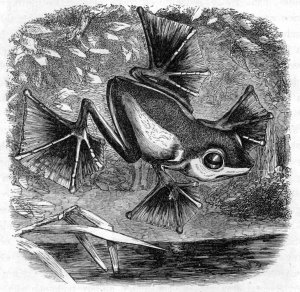
 | |
The CleaveMotif class provides a model for specifying aqueous cleavage sites of Polymer Sequences. More...
| Header: | #include <CleaveMotif.hpp> |
| Inherits: | MsXpS::libXpertMass::PolChemDefEntity |
| CleaveMotif(PolChemDefCstSPtr pol_chem_def_csp, QString name, const QString &motif = QString(), int offset = 0, bool is_for_cleavage = false) | |
| CleaveMotif(const CleaveMotif &other) | |
| virtual | ~CleaveMotif() |
| const QStringList & | codeList() const |
| bool | isForCleave() |
| const QString & | motif() |
| int | offset() |
| int | parse(const QString &site) |
| void | setForCleave(bool for_cleave) |
| void | setMotif(const QString &motif) |
| void | setOffset(int offset) |
| CleaveMotif & | operator=(const CleaveMotif &other) |
| QStringList | m_codeList |
| bool | m_isForCleave |
| QString | m_motif |
| int | m_offset |
When a polymer sequence cleavage occurs, using, for example, the specification "Lys/;Arg/;-Lys/Pro", a number of actions need be performed prior to listing the oligomers obtained as a result of the cleavage.
The "Lys/;Arg/;-Lys/Pro" cleavage specification (CleaveSpec) gets crunched in a number of steps and cleavage motifs are generated for it. In this specific case we'll have three motifs with the following data:
- First motif (or cleavage site): - "Lys/" - code list [0] = "Lys" - offset = 1 ('/' indicates that cut is right of monomer) - is for cleavage ? = true
- Second motif (or cleavage site): - "Arg/" - code list [0] = "Arg" - offset = 1 ('/' indicates that cut is right of monomer) - is for cleavage ? = true
- Third motif (or non-cleavage site): - "-Lys/Pro" - code list [0] = "Lys", [1] = "Pro" - offset = 1 ('/' indicates that cut is right of monomer) - is for cleavage ? = false
Thanks to this deconstruction (from "Lys/;Arg/;-Lys/Pro" to the 3 motifs above) is the polymer sequence cleaved according to the specification.
See also CleaveSpec and CleaveRule.
Constructs a cleavage motif.
pol_chem_def_csp Polymer chemistry definition. Cannot be nullptr.
name Name. Cannot be empty.
motif Motif in the form of "Lys/" or "-Lys/Pro".
offset Offset position of the cleavage to the first monomer code in the motif.
is_for_cleavage Tells if motif is for cleavage (for example, "Lys/") or not for cleavage (for example, "-Lys/Pro").
Constructs a CleaveMotif instance as a copy of other.
[virtual noexcept] CleaveMotif::~CleaveMotif()Destructs this CleaveMotif instance.
Returns the string list of codes in the motif.
Returns if motif is for cleavage.
Returns the motif.
See also setMotif().
Returns the offset.
See also setOffset().
Parses the cleavage site.
Upon parsing of the cleavage site, this CleaveMotif instance is filled with data.
Returns the number of monomer codes in the motif, or -1 upon error.
Sets if motif is for cleavage to for_cleave.
See also isForCleave().
Sets the motif.
See also motif().
Sets the offset.
See also offset().
Assigns other to this CleaveMotif instance.
Returns a reference to this CleaveMotif instance.
This variable holds the list of Monomer codes that are in the string motif.
For the "-Lys/Pro" motif, also from the Trypsin cleavage specification, there are two codes: "Lys" and "Pro".
Tells if the motif is for cleavage.
In the "Lys/" and "Arg/" motif, that would be true; for "-Lys/Pro", that would be false, because Trypsin does not cleave after a Lysil residue if it is followed by a Prolyl residue.
This variable holds the string motif that describes a specific cleavage site.
The "Lys/" cleavage motif is part of the cleavage specification that describes the model for the Trypsin cleavage in the proteinaceous world.
This variable holds the cleavage site offset with respect to the first monomer code of the motif.
In the The "Lys/", "Arg/" and "-Lys/Pro" examples, the offset would be 1 for each motif, because each time the cleavage occurs after the first monomer code: Lys/, or Arg/ or Lys/Pro.